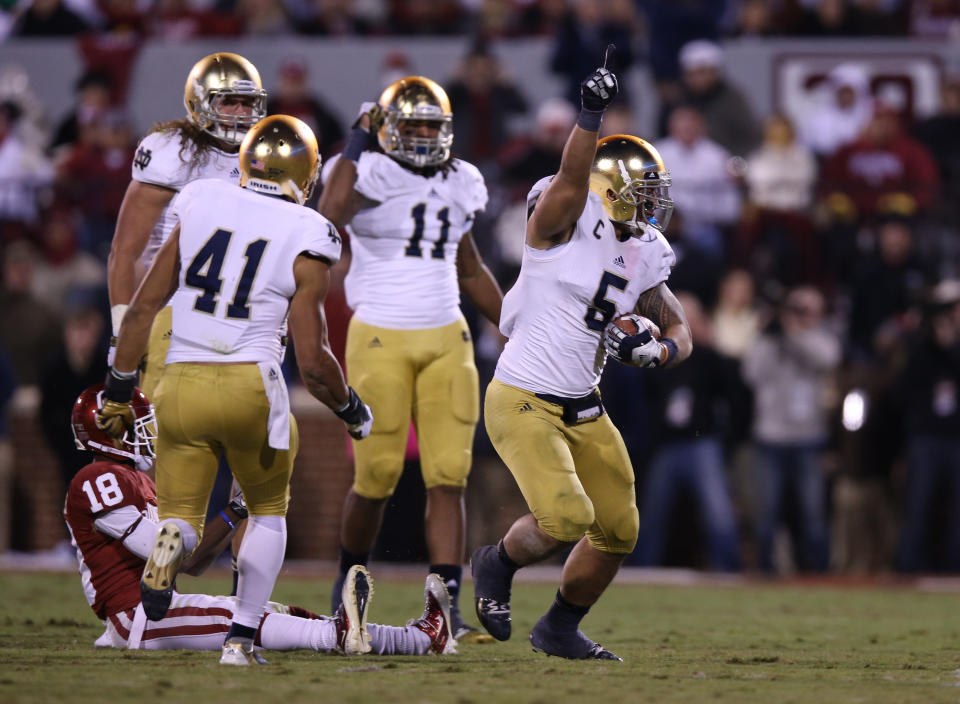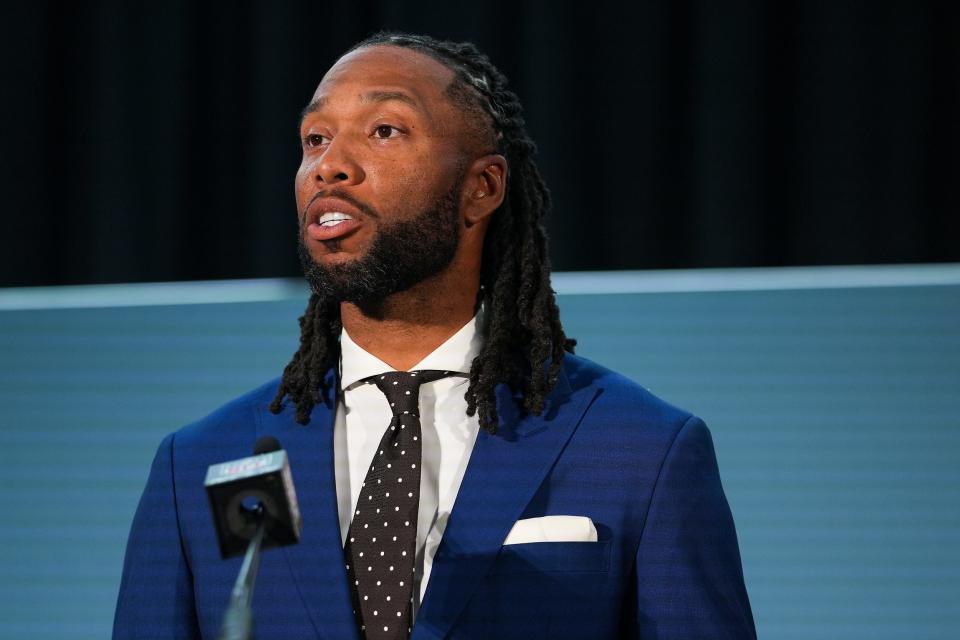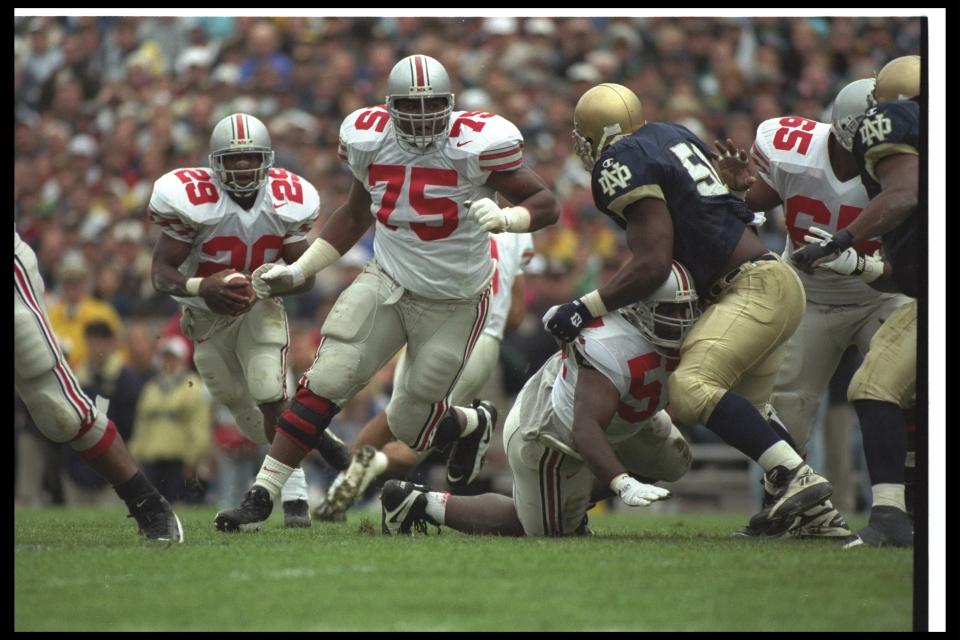7 times the Heisman Trophy went to the wrong player since 1990

It’s my favorite time of year! Head-scratching and hand-wringing over the Heisman Trophy!
What should be the most prestigious award offered to a college football player has, in my mind, been tarnished by the unwritten limitations placed on the award, evidenced in the yearly trotting out of quarterbacks and running backs as the top candidates for “best player in college football”.
Quarterbacks ARE putting up huge numbers in explosive, pass-oriented offenses, and the players taking their handoffs are scoring the touchdowns that make fans get out of their seat. But to limit the Heisman Trophy to this glamorous subsection of the sport is not calling attention to the greatness we’re all seeing all over the field.
This year, we’re seeing more of the same. All of the finalists are very good players and deserving of some sort of recognition. But to say four quarterbacks – USC’s Caleb Williams, TCU’s Max Duggan, Ohio State’s CJ Stroud and Georgia’s Stetson Bennett – are the four best players in college football is incorrect. Alabama’s Will Anderson, Georgia’s Jalen Carter, Michigan Olusegun Oluwatimi all don’t get invitations?
While I do believe USC’s Caleb Williams is the best player in the country this year, there have been mistakes over the years. I’ll save the “at least get the right guys as finalists” and “there should be five” discussions for another day. Here are the most glaring errors, in which a quarterback or running back was awarded the Heisman, but probably was less deserving than one of his less “glamorous” cohorts. We’ll go back all the way to 1990 (there’s a reason).
And as much as I believe Notre Dame mauler Quenton Nelson was the best player in college football in 2017, I’ve excluded him here because in spite of Baker Mayfield’s struggles in the NFL, he was pretty amazing that year. In order to be included on this list, a player had to finish in the Top 10 of voting.
2021: Bryce Young over Will Anderson

(Photo by Kevin C. Cox/Getty Images)
Again, we’re not discounting the greatness that was Young’s 2021 season. What he did as a freshman in the Alabama offense was incredible. He had numerous five-star weapons at his disposal, but he was able to use them effectively enough to get to the title game. But it was his teammate Anderson, who jumped off the screen every Crimson Tide game last season. You could say he had 31 tackles for loss, 17.5 sacks and 101 combined tackles and leave it at that, but Anderson, after a mid-season loss to Texas A&M that put their playoff hopes in jeopardy, registered 20.5 tackles for loss and 12.5 sacks in the next seven games, all wins, as Alabama again won the SEC.
2012: Johnny Manziel over Manti Te'o

Matthew Emmons-USA TODAY Sports
Manziel had highlight moments and I have said in other outlets previously that on sheer talent, I thought Stephon Tuitt was a better player than Te’o on the Notre Dame defense that season, but the Notre Dame captain’s numbers, leadership and spirit drove a good, not great, Notre Dame team to the #1 ranking and the National Championship game. Manziel had his mad dash against Alabama, but give me Te’o’s game-clinching pick at Oklahoma or his goalline stop against Stanford every time. Maybe some bias baked in here.
2009: Mark Ingram over Ndamukong Suh

Howard Smith-USA TODAY Sports
Simply put, Suh is in the team photo for the most dominant college football player I’ve ever seen. Led by Suh, the Cornhuskers led the nation in points allowed (10.4/game) and limited opponents to 272 yards per game. In 14 games that season, Suh registered 20.5 tackles for loss and 12 sacks, while also somehow defending 11 passes. His Big XII Championship performance alone, albeit in a losing effort, deserves to be recognized. Texas quarterback Colt McCoy probably still sees Suh in his nightmares after the Nebraska star sacked him 4.5 times and the Cornhuskers limited the explosive Longhorns to 206 total yards. Unfortunately, Nebraska’s offense was limited all season, possibly jeopardizing more individual accolades for Suh and more wins for the team. Somehow, they went 10-4.
2003: Jason White over Larry Fitzgerald

USA TODAY SPORTS
Larry Fitzgerald track down deep balls from Rod Rutherford was one of the most majestic things you could ever see. And here’s the thing. I could have slipped any Pitt quarterback from history into that sentence and you would have nodded your head (Tyler Palko, anyone?) because no one was watching the throw. Everyone was watching to see if Fitz would come down with it. There have been dominant college receivers, who struggled in the pros. There have been pro receivers who flew under the radar in college. But few can’t miss prospects who also put up huge numbers in college. Fitzgerald was one of them. Oklahoma’s team had the cache and recognition and White was the one slinging it. But Fitzgerald without a doubt was the best player in college football that season.
2001: Eric Crouch over Roy Williams, Bryant McKinnie, and Julius Peppers

Jonathan Daniel /Allsport
I’m not joking when I say the Heisman voters had multiple different avenues they could have gone down that would have felt like a more satisfactory selection than Crouch. I remember this as the year ESPN plastered a host of different quarterbacks on regional covers of their magazine for the college football preview. I was a freshman at Illinois and had the Kurt Kittner cover adorning the wall of my dorm room (right under the Notre Dame flag mind you). But it felt like everyone was simply speaking a great quarterback into existence without it happening. Dorsey. Grossman. Carr. Harrington. All good players. But Roy Williams leapt over an entire offensive line to take out Chris Simms. McKinnnie made sure Dorsey’s jersey stayed clean all season because everyone was terrified of him. Peppers had one of the most ridiculous tipped to himself pick 6’2 you will ever seen and looked as if he shouldn’t have been on the same field as most guys he was playing against (or with for that matter). Heck, the guy I actually believed was the best player in college football, Miami safety Ed Reed, didn’t even get a vote. But they wanted the quarterback. And they picked the one who, while nimble on his feet, threw more interceptions than touchdowns.
1996: Danny Wuerffel over Orlando Pace

Jonathan Dani
I believe there is a chance that if Steve Spurrier would have trotted out his fourth-string quarterback, future NFL coordinator Brian Schottenheimer, during the 1996 season, that offense would have scored 40 points a game. Sure, it was made easier by Wuerffel’s mastery of the Spurrier offense, but in addition to having one of my favorite three receiver sets in college football history (an article for another day) of Reidel Anthony, Jacquez Green and Ike Hilliard, he had three future NFL draft picks to hand the ball off to including Fred Taylor. Pace had already shown the nation what he could do the year before in paving the way for Heisman winner Eddie George. In 1996, the Buckeyes offense actually got better after losing George because Pace turned out to be the lynchpin to the Buckeyes offense. It’s easy to gain yards when you’ve got an entire side of the offensive line taken care of by one giant human and future NFL Hall of Famer. Pace is still the greatest offensive lineman I’ve ever seen in college football and should have been given the most prestigious award.
1990: Ty Detmer over Raghib "The Rocket" Ismail

(AP Photo/Scott Anderson)
The first Heisman ceremony I remember watching. I still remember my dad looking at the screen in my grandparents’ living room saying, “What? Are you kidding me?”. Obviously you can tell where his allegiances were. Ismail was an offensive weapon more than anything else. He wasn’t going to garner the 300 carries of star running backs or put up the eye-popping stats that Detmer did, but he did two things that stood out more than anything else. He changed the way opponents had to scheme against Notre Dame and he electrified crowds. More often than not, those two things will tell you who the best player is on the field, both schematically and by the eye test. Ismail was the best player and may have ironically paved the way for Michigan’s Desmond Howard to win the next year after many pointed out the potential “mistake” in the national media.

